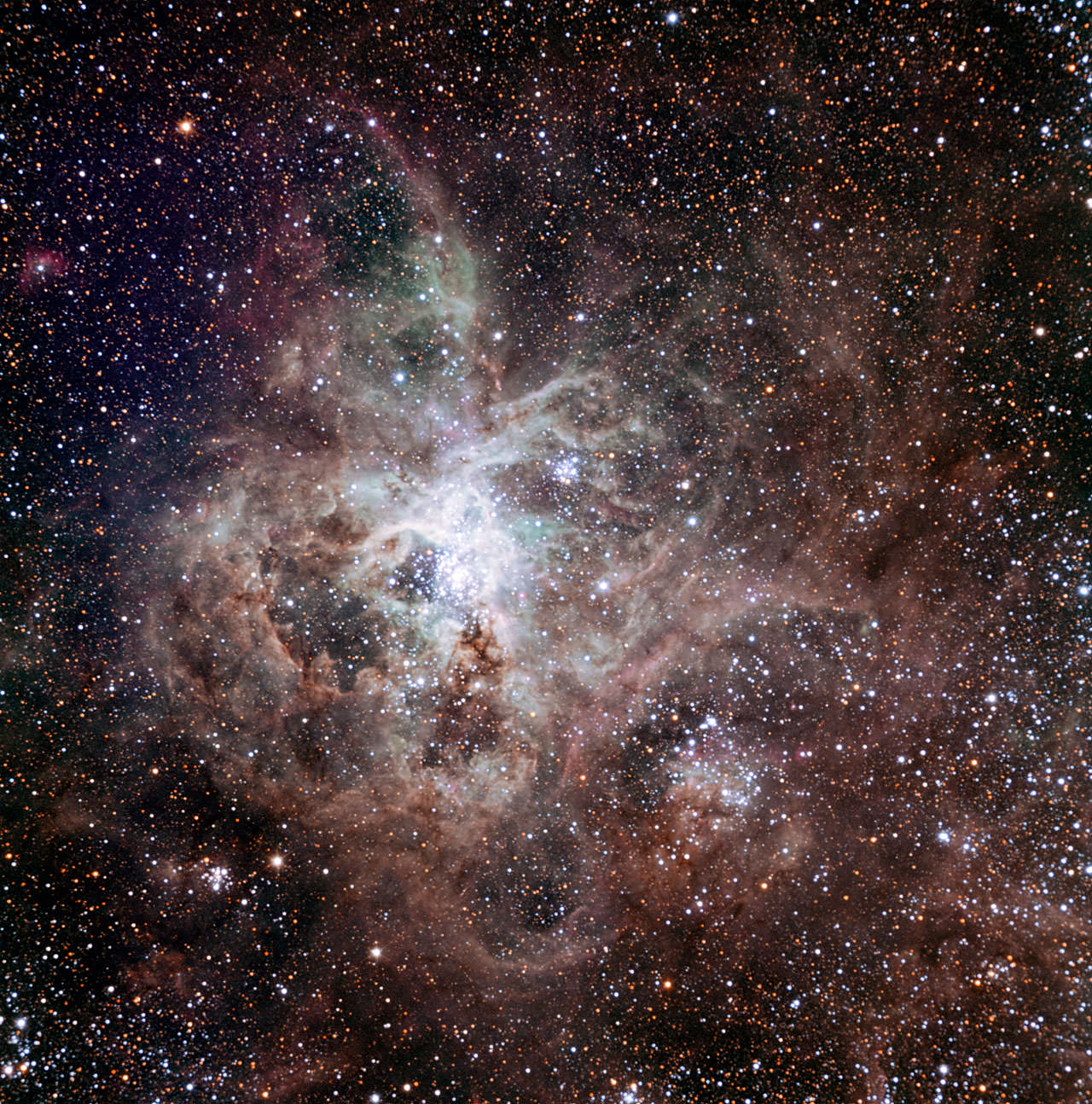[/caption]
Great shot of the Tarantula nebula!
A new robotic telescope dedicated primarily to hunting for extra solar planets has opened its eyes. Although its first light image is of a nebula, the TRAPPIST (TRAnsiting Planets and PlanetesImals Small Telescope) at ESO's La Silla Observatory in Chile will focus on detecting and characterizing planets located outside of our solar system. The new telescope will also study comets.
"The two themes of the TRAPPIST project are important parts of an emerging interdisciplinary field of research — astrobiology — that aims at studying the origin and distribution of life in the Universe," said Michaël Gillon, who is in charge of the exoplanet studies.
"Terrestrial planets similar to our Earth are obvious targets for the search for life outside the Solar System, while comets are suspected to have played an important role in the appearance and development of life on our planet," adds his colleague Emmanuël Jehin, who leads the cometary part of the project.
TRAPPIST will make high precision measurements of "brightness dips" that might possibly be caused by exoplanet transits. During such a transit, the observed brightness of the star decreases slightly because the planet blocks a part of the starlight. The larger the planet, the more of the light is blocked and the more the brightness of the star will decrease.
For studying comets, TRAPPIST is equipped with special large, high quality cometary filters, allowing astronomers to study regularly and in detail the ejection of several types of molecules by comets during their journey around the Sun.
"With dozens of comets observed each year, this will provide us with a unique dataset, bringing important information about their nature," says Jehin.
TRAPPIST is a lightweight 0.6-metre robotic telescope, fully automated and moving precisely across the sky at a high speed. The observing program is prepared in advance and the telescope can perform a full night of observations unattended. A meteorological station monitors the weather continuously and decides to close the dome if necessary. The control center for this telescope is in Liège, Belgium, about 12,000 km away.
See more first light images from TRAPPIST, including Omega Centauri and M83
at the ESO website.
 Universe Today
Universe Today
